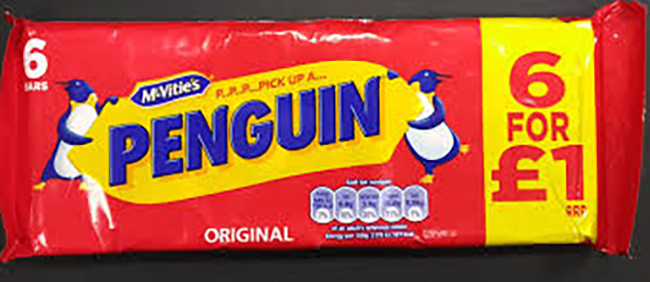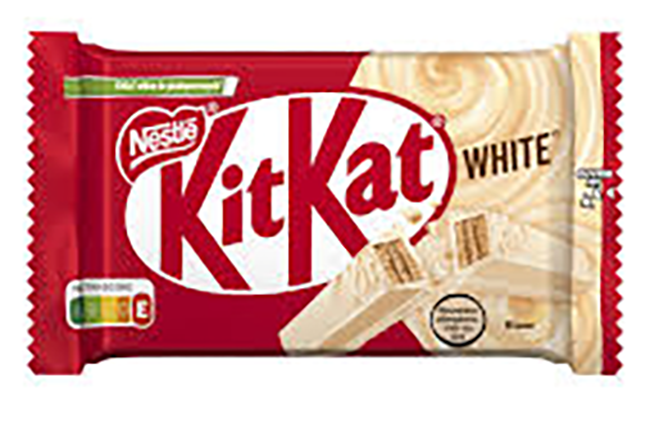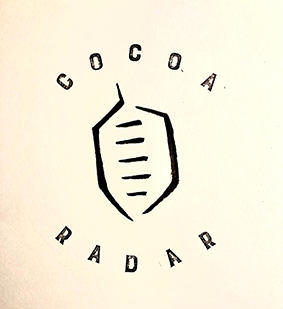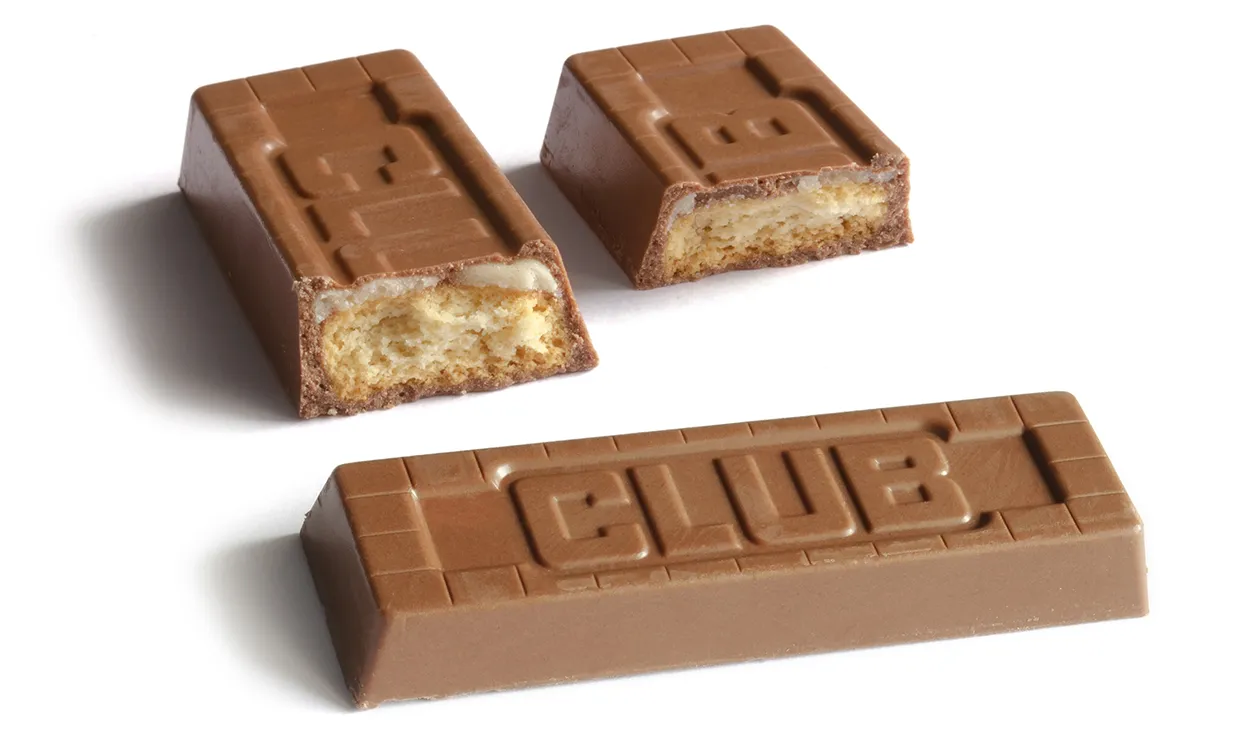It has been common knowledge for some time that major chocolate brands are altering recipes, shifting away from traditional cocoa-rich formulations and replacing them with coatings or blends that no longer meet the legal definition of 'chocolate' in the UK and EU.
This matters for consumers, for cocoa farmers, and for overall transparency. Of course, the price of cocoa has more than doubled in some instances over the past two years, pushing manufacturers to adjust to keep consumer prices relatively stable.
But is this a convenient factor for brands to reduce costs and maintain profits by misleading consumers in this underhanded way?
The Backstory
In summer 2025, industry observers noted a seismic shift: due to surging cocoa prices and poor harvests in West Africa, companies such as Nestlé and Pladis (owner of the iconic UK brands, McVitie's, Penguin and Club) were removing the word 'chocolate' from some products because their cocoa-butter or cocoa‐solid content fell below the legally-mandated minimum.
Specifically, we can report that:
- Penguin and Club bars now use what the manufacturer calls a “chocolate flavour coating with cocoa mass” in place of a true chocolate coating. The firm says taste tests show the new coating “delivers the same great taste,” though the formulation now includes more palm oil and shea oil than cocoa solids.
- White-chocolate versions of products such as the white version of KitKat and white-chocolate digestives from Pladis no longer contain enough cocoa butter to qualify as “white chocolate.” In the UK, the minimum cocoa butter content is 20%.
In other words, what appears to the consumer as 'chocolate' may no longer legally be so. And even when it is still labelled 'chocolate', the composition may have changed significantly.
How the Legal Definition Works (and Why It Matters)
Under UK & EU law, the term 'chocolate' is not purely marketing fluff—it’s regulated. For example, 'white chocolate' must contain at least 20% cocoa butter. Regular milk chocolate must contain a certain minimum of cocoa solids and cocoa butter, too. When a product falls below those thresholds, legally it cannot be labelled simply 'chocolate' but must instead use modifiers like “chocolate-flavour coating” or “chocolate-coated”.

In the case of Penguin and Club bars, Pladis itself admitted that the bars “can no longer be described as chocolate biscuits” because the product no longer meets the minimum cocoa content.
“We’re committed to delivering great-tasting snacks while minimising the impact of rising costs on consumers, adjusting formulations only when necessary,” Pladis said in a statement.
Why this matters to the consumer: if you believe you’re buying 'chocolate', you expect cocoa to be one of the main ingredients. If the bar uses higher proportions of vegetable fats or “chocolate flavour” coatings, that changes what you’re actually eating—and could affect taste, health profile, and value.
Marc Donaldson, Chief Chocolate Officer of the Oumé chocolate brand and a veteran of the industry, said he does not believe that consumers will stand for the switch.
“Where is brand loyalty? They have betrayed all that trust built up over the years. How stupid do brands think consumers are?
“McVities used to be a great British brand with products like Club, wich, which had a great advertising slogan: 'If you like a lot of chocolate on your biscuit, join our Club', well, not anymore.
“When Cadbury changed its recipe to Cocoa Butter Equivalents (CBEs) in some bars a while back, did they think nobody would notice the difference?
“Now that the mainstream media are reporting on this development, consumers will react negatively towards these brands - they will be ‘hoist by their own petard’.”
Donaldson also made the point that, in his words, it opens the door to the ‘alt-chocolate brigade’. “What is chocolate now? Who knows anymore, it may as well be grown in a lab.”
Brand-by-Brand Snapshots
Penguin/Club (Pladis)
- The Guardian reports that earlier in 2025, the recipe changed for these iconic UK snacks: the coating now has more palm and shea oils than cocoa.
- Pladis confirmed the switch: “We made some changes … we are using a chocolate flavour coating with cocoa mass, rather than a chocolate coating.”
- Impact: The famous slogan “If you like a lot of chocolate on your biscuit, join our Club” has been retired.

KitKat White (Nestlé)
- According to The Grocer, KitKat White and similar 'white chocolate' digestives no longer contain enough cocoa butter to be classed as white chocolate.
- A FoodNavigator analysis also confirms that Nestlé and Pladis had to drop the word 'chocolate' from some UK products because cocoa butter fell below the legal minimum.
Cadbury/Mondelez
- While there is less public disclosure around Cadbury’s cocoa levels in this specific context, the parent company Mondelez International (owner of Cadbury in the UK) has been highlighted in trade speculation for reducing cocoa content—one claim (unverified) says sugar content rose from 68% to 73%. In contrast, cocoa fell from 31% to 25%.
- Separately, chocolate inflation data from The Guardian shows that Cadbury’s 110g bar now costs ~£1.84 on average—up 30% over two years.
The Supply-Chain Backstory: Why Cocoa’s Price Has Exploded
The root of the reformulations lies in cocoa’s global market:
- Major growing regions like Ghana and Côte d’Ivoire—suppliers of roughly 60% of global cocoa—have been hit by drought, extreme heat and diseases affecting yields.
- Cocoa prices have more than doubled in some instances, from below $3,500/tonne to peaks above $12,000/tonne, but in recent months they have come down.
- As input costs soared, manufacturers had a choice: raise retail prices sharply; shrink product size (shrinkflation); or reformulate with lower cocoa content and/or alternative fats. Many chose a combination.
For consumers already under cost pressures, this means that chocolate snacks are more expensive—and in some cases may contain less cocoa than they used to. The question becomes: Do we know what we’re getting?
Consumer Impact & What to Look Out For
Transparency: Brands are required to disclose significant changes to ingredients and to update packaging accordingly. Legally, if the composition changes such that the previous descriptor (e.g., 'milk chocolate') is no longer accurate, the packaging must reflect that.
Taste and texture: When cocoa mass or cocoa butter proportions change, mouthfeel and flavour can alter. Some manufacturers claim sensory tests show a negligible difference, but consumers may disagree.
Value for money: With higher cocoa costs, manufacturers may keep prices stable but reduce size or content. For example, a KitKat multipack may drop from nine to eight bars while keeping the pack price similar.
Health and diet implications: While cocoa content alone isn’t a health indicator, replacement with other fats or flavourings may change nutritional profiles or how we interpret ‘indulgence.’
Brand trust: Consumers may feel misled if a favourite product subtly changes and is perceived differently—even if legally compliant.
What to check when you shop:
- Look for descriptors such as ‘chocolate-flavour coating’ vs ‘chocolate coating’ on packaging.
- Examine the ingredient list: does cocoa mass/solids appear high? Are vegetable fats listed prominently?
- Compare bar sizes and packaging across years as a potential indicator of shrinkflation.
- Review price per 100g rather than simply by bar or pack count.
Broader Implications: Beyond the Supermarket Shelf
For cocoa farmers: Price pressure means the cocoa global supply chain remains fragile. If major manufacturers reduce cocoa content, less cocoa may be purchased, or purchases shift to cheaper, lower-grade cocoa. That may impact long‐term investment in farming, sustainability and labour conditions.
For regulation and labelling: The episode shows that food-labelling law matters—and that it can force changes in industry behaviour. But it also raises questions about consumer awareness. Are shoppers aware that a product labelled 'chocolate flavour' may not be what they assume?
For sustainability: Some manufacturers say they must reformulate to maintain affordable prices—but some also use the moment to explore sustainability (traceable cocoa, alternative fats, new farming programmes). For instance, Nestlé has invested in an Income Accelerator Program to boost cocoa-farmer incomes.
For competition and market behaviour: Smaller artisanal chocolate producers that stick to higher cocoa content may find themselves at a premium, while large branded snacks may shift toward cost structures that favour scale and ingredient flexibility.
So, What Should Consumers Do?
- Be label-savvy: Recognise that ‘chocolate flavour’, ‘chocolate-style coating’ or ‘coated in chocolate flavour’ are signals that the product might not meet traditional chocolate standards.
- Consider price per gram: If a bar is the same price but smaller or differently formulated, you’re effectively paying more for less cocoa content.
- Ask questions: Reach out to brands if you’re curious about cocoa content or whether their formulation has changed. Some companies publish reports or websites with details.
- Support brands with transparent sourcing: If you care about cocoa-farmer welfare and ingredient quality, look for traceability or sustainability claims, and verify them where possible.
- Prioritise indulgence items consciously: If buying premium chocolate, check cocoa percentage and ingredient list rather than assuming 'chocolate bar = cocoa rich'.
CocoaRadar’s Bottom Line
When you unwrap your next bar, you might ask: Is this a chocolate bar—or something else? The answer matters. For decades, chocolate’s indulgent appeal came from cocoa’s flavour, aroma and tradition. At a time when cocoa prices and supply-chain pressures are real and significant, many snacks retain their familiar branding and flavour—but shift subtly under the label, under the wrapper, and under the rubric of what constitutes “chocolate”.
For consumers, the shift isn’t just about semantics—it’s about value, transparency, and the integrity of a treat. The change may stay invisible if you don’t look closely. But if you do, you might find that a chocolate bar is no longer the chocolate bar you thought it was.
By Cocoaradar Insights, Consumer Watch
email: insights@cocoaradar.com

